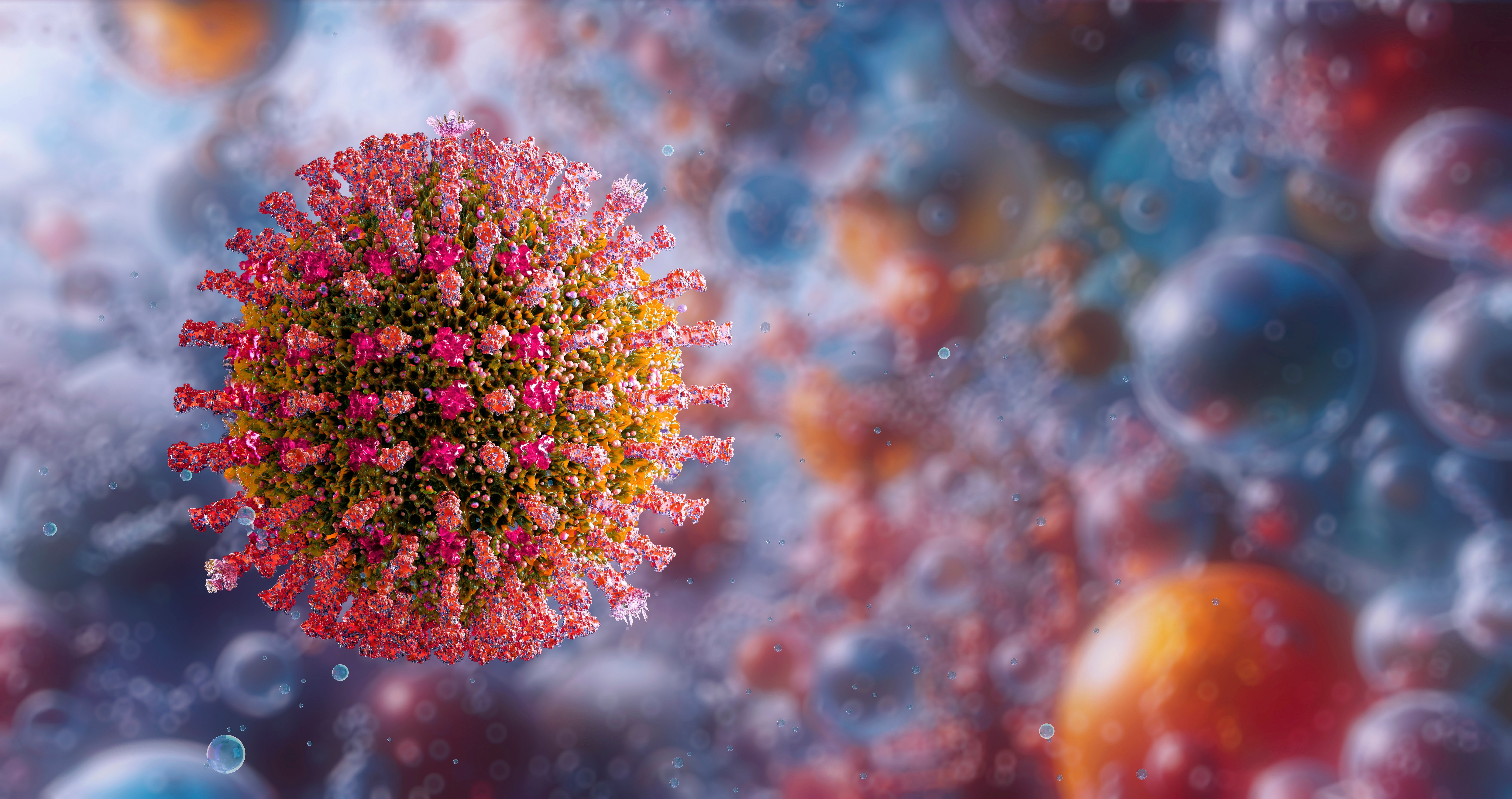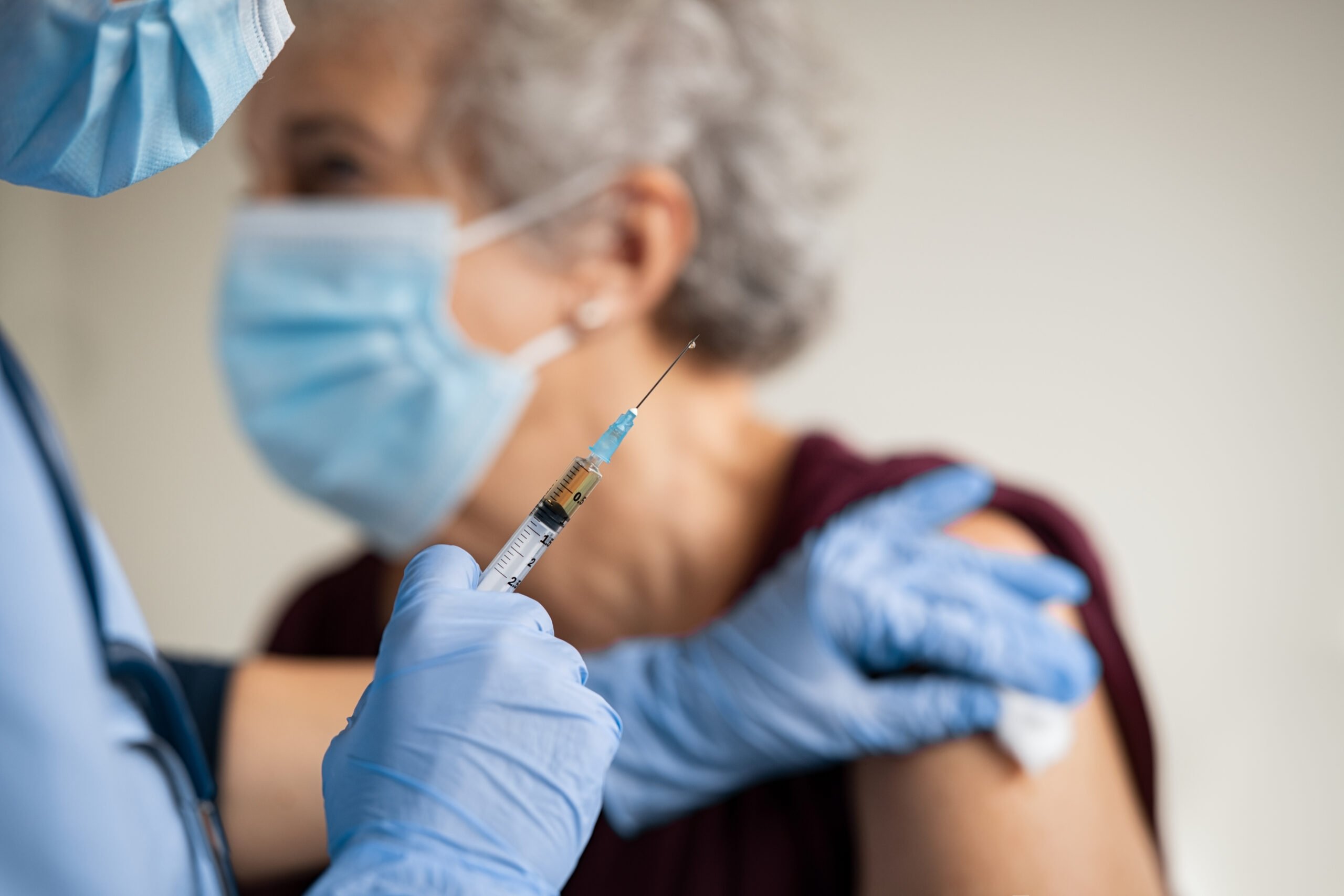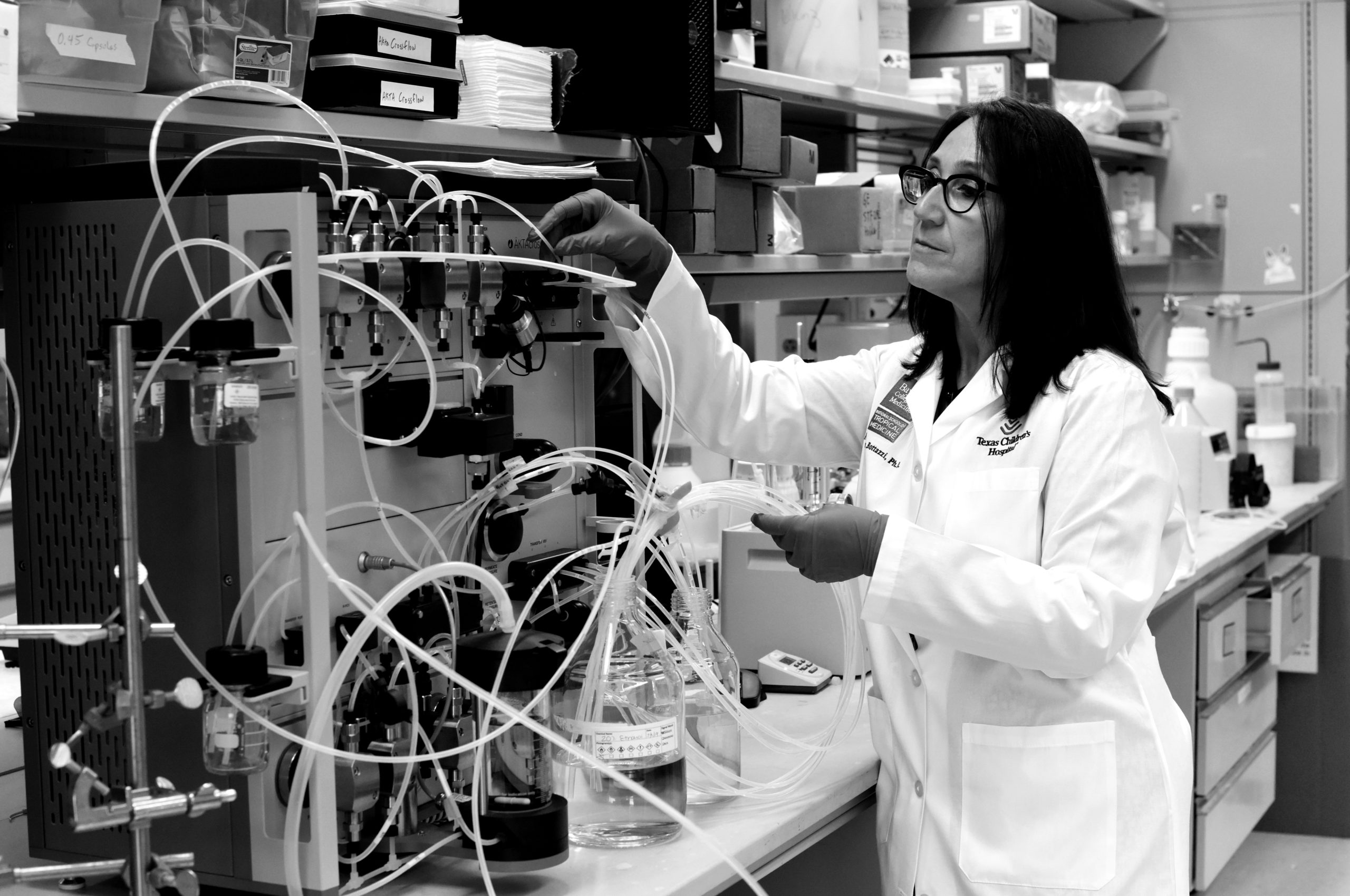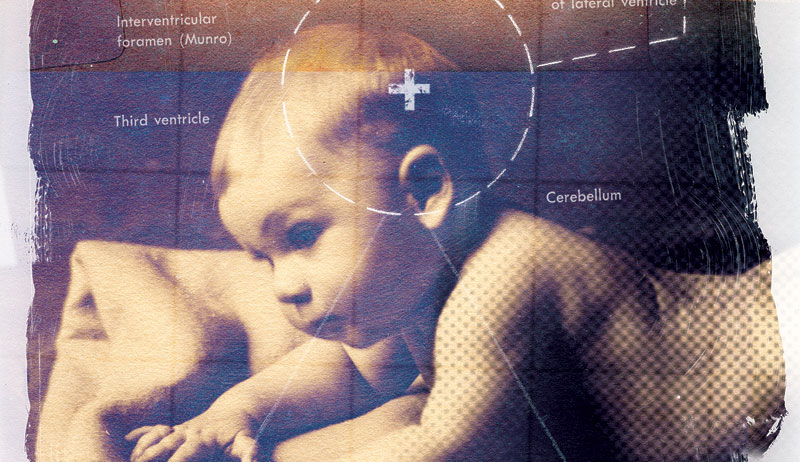
Autism Inc.: The Discredited Science, Shady Treatments and Rising Profits Behind Alternative Autism Treatments
The road for parents with autistic children is made perilous by medical professionals willing to prescribe all sorts of treatments they say can treat, even cure, autism.

A version of this story ran in the February 2013 issue.
The lowest point for Ann Dimick came in January 2012, when in the middle of the night she climbed out of bed, walked across her bedroom and into the closet, closed the door, sat cross-legged on the floor, and dissolved into tears.
For the previous month, she had watched her 17-month-old son Jude start to withdraw, regressing before her eyes. While his twin brother, Henry, ran all over the family’s West Austin house and played in the yard, Jude would huddle in a ball on the floor, hugging his blanket. He no longer made eye contact; the words he’d learned to say—car, mama and dad—disappeared. He was constipated. Ann and her husband, Luc, watched helpless as their child effectively faded away. “Am I going to lose this little guy forever?” Ann thought in the closet that night. “Will he come back? Will he ever talk again?”
This was before the autism diagnosis. Before futile visits to their pediatrician. Before the reams of advice—some of it warranted, some of it not—from friends and random strangers. And it was before the Dimicks dove headfirst into a minefield of information and misinformation about what on earth to do for their little boy.
The statistics weren’t comforting: In March 2012 the Centers for Disease Control estimated that one in 88 American children is somewhere on the autistic spectrum. We’re still not sure exactly what causes autism, and we’re not sure why the number of children with autism spectrum disorders (ASDs) has increased since the early 1990s. According to the National Academy of Sciences, it could be because people are more aware of autism spectrum disorders today; because pediatricians are doing more screening; and because there have been changes in how autism disorders have been defined and diagnosed. In other words, more children with milder symptoms are being identified as somewhere “on the spectrum,” where they wouldn’t have been in years before. But as the Dimicks discovered—like many other parents before them—plenty of doctors claimed to have all the answers.
The road parents must navigate is made more perilous by medical professionals willing to prescribe all sorts of treatments, from hyperbaric oxygen chambers and chelation therapy (which removes heavy metals with chemicals) to shelves full of dietary supplements and other alternative remedies they say can treat, even cure, autism. At best these treatments remain unapproved by the U.S. Food and Drug Administration; at worst they are downright dangerous.
To compound the problem, a host of celebrities act as unpaid marketing reps for these unproven treatments, touting a pervasive (but incorrect) belief that autism is caused by childhood vaccines. This misinformation campaign has led, in the last few years, to a decline in the number of children receiving lifesaving inoculations. And Texas has become a center for alternative autism treatment and the anti-vaccine crusade.
The Dimicks plunged into this mire of spurious cures and fear when little Jude was first diagnosed with autism in 2012.
Ann was the first to notice something wrong with Jude. She works as a pediatric dentist and knew several children with autism, so she was aware of the warning signs. “I thought I was being OCD about it,” she says now, “but he started having a lot of constipation and wasn’t interacting. I knew he didn’t feel good. The nurse practitioner said to give him Miralax [a laxative], but no one was asking what was causing the constipation.”
Luc started noticing behavioral changes about a month later, when Jude turned 18 months. “He was starting to spend all this time alone and was really quiet and something hit me,” he tells me, sitting next to Ann on a couch in their living room, while Jude plays with his brother nearby. “I watched a video on YouTube about a little autistic girl, and I couldn’t believe how much Jude was acting like her.”
Ann thought she knew how to handle autistic children, but she says you have no clue until you have a child of your own on the spectrum, that nothing can prepare you for how helpless you feel as a parent.
Ann and Luc began scrolling through the Internet and bumping into other parents at the park who’d tried this therapy, that treatment: gluten-free diets, oxygen chambers, chelation. “Everybody has their own journey,” Ann says, “so it’s frustrating. No one has the answer. And yet the number of autistic kids is increasing.”
The Dimicks believe the accepted wisdom that autistic spectrum disorders are genetic, but Ann says she can’t help wondering whether there’s an environmental or dietary component as well. “The amount of crap that’s in our food has to play a part somewhere. But I also think a large part of the identification of autistic kids is because we’re diagnosing children that in years past wouldn’t have been diagnosed at all.”
Luc says when they took Jude to the doctor for his 18-month check-up they were left “totally flabbergasted” that their concerns weren’t taken seriously. The doctor gave them a questionnaire: Does your child withdraw from the kids in his pre-school class? Does your child still ride a bike with training wheels? “It wasn’t age-appropriate,” Ann says, “so we were just left feeling incredibly frustrated and alone.”
The Dimicks say their doctor told them not to worry about Jude, to wait until he was 2 and then to pay him another visit.
“I went against his opinion,” Ann says. “I called the developmental doctor at Dell Children’s Hospital. I went on the wait list in January and saw the doctor on March 1. That day she observed Jude for an hour and a half and said he was on the spectrum.”
The Dimicks enrolled Jude in full-time Applied Behavior Analysis (ABA) therapy. Three different therapists come to their home each morning, and they’ve seen remarkable improvement. “Jude’s vocabulary has increased. Everything he lost speech-wise he’s gained, and then some,” Ann says. “He no longer has constipation.”
Applied Behavior Analysis therapy involves numerous approaches, the most common of which is based on the concept that when behavior is followed by a reward, that behavior is likely to be repeated. The technique can be applied to everyday situations through a process of looking, listening and imitating.
Luckily, the insurance from Luc’s job as a professor at the Art Institute of Austin covers all of Jude’s therapy. “What sends shivers down my spine is thinking about the single mom who works a job that has insurance that doesn’t cover something like this,” Luc says. “I honestly believe it’s the therapy that’s done miracles with Jude. The fact there are people out there who don’t have that access just crushes me.”
Ann says that, as a parent with an autistic child, you can find all sorts of information on the Internet to support your opinion. “You can find stuff that talks about how fluoride in the water is a government conspiracy. And that is just crazy. Autism is the same way. You can go nuts over all the information that is out there, and I feel bad for the parents who cling to the extremes of what to do for their kids.”
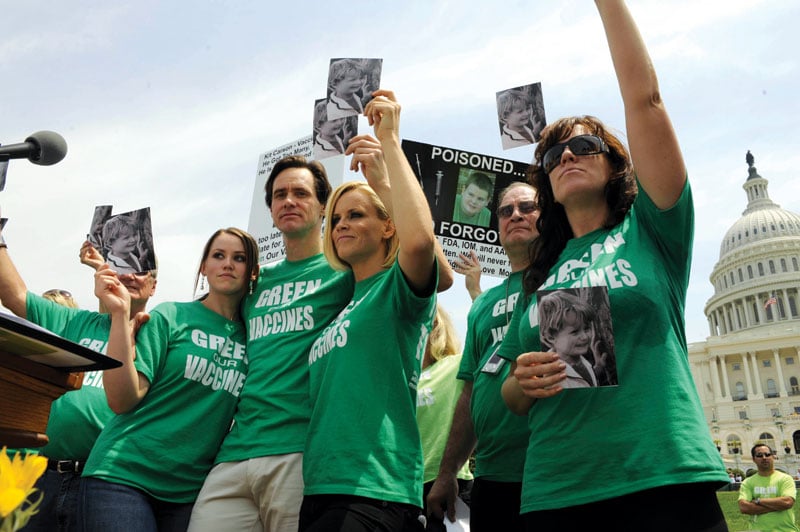
and Jim Carrey lead the Green Our Vaccines March in an effort to eliminate toxins from children’s vaccines. June 4, 2008, Washington, D.C. Christy Bowe/Globe Photos/ZUMAPRESS.com)
The extremes. That Texas has become a hotbed for alternative autism treatment and that many parents blame their children’s autism on vaccinations is thanks in no small part to the 2001 arrival of a man named Andrew Wakefield.
Fifteen years ago, Wakefield was the lead author of a paper published in the British medical journal The Lancet suggesting a possible link between autism and the measles, mumps and rubella (MMR) vaccine. Though the paper itself said that no causal connection between MMR and autism had been proven, the publicity surrounding it—in which Wakefield called for the suspension of the triple vaccine—caused panic among parents. The number of parents choosing to vaccinate their children fell dramatically, and measles rates went up: In 1998, there were just 56 cases of the disease in England and Wales, but by 2008 there were 1,370. In 2006, the country saw its first child measles death in more than a decade.
In 2011 the World Health Organization urged European countries to act to stop the spread of the disease after the largest outbreak in years. According to the agency’s report, there were more than 26,000 reported cases of measles in 36 European countries that year. Of those, nine people died, including six in France, and 7,000 people were hospitalized. Ninety percent of the cases occurred in people who were “definitely or probably not vaccinated.”
In 2004, the UK’s Sunday Times published an investigation into Wakefield, exposing what the newspaper said were conflicts of interest (that Wakefield had been paid to advise attorneys for parents who believed their children had been harmed by MMR) together with unethical research practices (that children were subjected to a series of invasive tests such as spinal taps, and that Wakefield paid children for samples of their blood at his son’s birthday party).
Shortly afterward, 10 of Wakefield’s 12 co-authors removed their names from The Lancet paper (in 2010 the journal retracted the paper altogether), and the UK’s General Medical Council launched an investigation. The council hearings started in July 2007 and lasted two and a half years—the longest in the body’s history, costing an estimated $1.6 million. Its conclusion—that the doctor was guilty of serious professional misconduct—resulted in the council striking Wakefield from its register, meaning he could no longer practice medicine in the UK.
In January 2011 the British Medical Journal (now officially known as the BMJ), a peer-reviewed publication, went further, accusing Wakefield of outright fraud. In a series of articles, the journal asserted that he altered facts about his patients’ medical histories to support his claim to have identified a new syndrome, which linked bowel disease, autism and MMR; and that he sought to exploit the ensuing MMR scare for financial gain (it said he had been paid more than 435,000 British pounds to advise attorneys working on the MMR suit). Wakefield, the BMJ wrote, has “repeatedly denied doing anything wrong at all. Instead, although now disgraced and stripped of his clinical and academic credentials, he continues to push his views.”
In January 2012 Wakefield attempted to sue the BMJ in Texas courts for falsely accusing him of fraud; seven months later a judge dismissed the suit.
Wakefield’s original 1998 study inadvertently led to more studies on MMR and autism than would ordinarily be deemed necessary. The Institute of Medicine of the United States National Academies, the Centers for Disease Control and Prevention, and the UK’s National Health Service all found no link between MMR and autism.
One study found “no evidence that children with autism were more likely than children without autism to have had defined gastrointestinal disorders [something Wakefield’s paper had looked at] at any time before their diagnosis of autism.”
Another found further evidence “against involvement of MMR vaccine in the initiation of autism.”
Yet another concluded that MMR vaccination was “most unlikely to be a main cause of ASD (autism spectrum disorders).”
Discredited in his native UK, Wakefield moved to Austin in 2001 with his wife Carmel and their four children. Three years later, along with a group of parents and other doctors, he founded the Thoughtful House Center for Children to further his work in autism research. Wakefield served as its executive director and was paid a salary of around $250,000 a year until, mired in controversy, he resigned in early 2010.
That same year, I interviewed Wakefield for the UK’s Sunday Telegraph magazine at an anti-vaccine rally in Chicago. He was unrepentant, likening what he described as a “denial of an epidemic” to the era in the 1950s before tobacco was known to be harmful. I wrote that for someone shunned by his peers and condemned by the medical establishment, Wakefield possessed an astonishing amount of self-belief. He wanted to discuss a book he had just published, Callous Disregard—a kind of literary middle finger to the establishment that had shunned him—and after the rally in a Chicago park, he headed to a nearby hotel where he was a keynote speaker at an anti-vaccine conference.
Also on the bill were Jenny McCarthy, the former Playboy model and outspoken anti-vaccine activist; Dr. Kenneth Bock, who claimed autistic children could be cured if their bodies were cleansed of toxins; and Dr. Mayer Eisenstein, whose 2010 book Make an Informed Vaccine Decision gives credence to Wakefield’s discredited research.
I asked Wakefield in 2010 if he could re-write his original paper today, what he would do differently. “I’d do it exactly the same,” he told me. “Because you cannot censor science.”
After resigning from Thoughtful House, he set up the nonprofit Strategic Autism Initiative in Austin to commission studies of the condition. He is still a director of the nonprofit, according to the Texas Secretary of State.
In 2011 Thoughtful House changed its name to the Johnson Center for Child Health and Development, and Anissa Ryland was named its new executive director. At the time, Ryland told the Austin American-Statesman that the organization no longer collaborated with Wakefield, presumably enabling it to get on with its work free of its association with one of the biggest pariahs in British medicine.
Jane Johnson, a member of the family of Johnson & Johnson health care products and services company and a relative of Betty Wold Johnson, after whom the Center is named, co-authored a book in 2007 called Changing the Course of Autism. The book controversially posits that mercury, once used as a preservative in some vaccines, is a cause of autism and concludes that chelation, which removes metals from the body, can treat it. “Since it can be argued that autistic children are demonstrating neurological and immunological symptoms as a result of low-level, intermittent heavy metal exposures,” the book contends, “carefully administered chelation therapy seems indicated.”
The book goes on to say that from the authors’ experience “and that of many other physicians treating autistic children … children with autism improve with chelation therapy, and that it’s generally safe and well tolerated if done under appropriate medical supervision.”
A number of prominent Central Texans supported Thoughtful House when Wakefield launched the organization. Former Dell executive Charlie Ball and his wife Troylyn were among its founders, and filmmaker Robert Rodriguez and his former wife Elizabeth Avellan held an event at Austin’s Paramount Theatre to raise money to help fund it. In fact, reviewing Wakefield’s book Callous Disregard, Rodriguez and Avellan wrote:
“Meeting Dr. Andy Wakefield changed our lives and … we are forever grateful. His wise and measured advice about vaccinations helped us dodge a bullet … Our fourth son [had] multiple allergies and repeated infections … We now fully realize [he] would have been a victim of immune overload had we followed the regular vaccine schedule. … [He] is [now] bright and healthy … This book provides a terrifying insight into what has been happening behind the scenes as efforts redouble to silence Dr. Wakefield … It is a wake-up call to those who think [he] is anything other than a modern day hero fighting for all of our children.”
Two of the biggest celebrity endorsers of debunked theories about autism in the U.S.—and staunch supporters of Wakefield—have been Jenny McCarthy and her former boyfriend, actor Jim Carrey. McCarthy claims that vaccines caused her son’s autism and that chelation therapy helped cure him. In a statement released in February 2010, McCarthy and Carrey said, “It is our most sincere belief that Dr. Wakefield and parents of children with autism around the world are being subjected to a remarkable media campaign engineered by vaccine manufacturers. Dr. Wakefield is being vilified through a well-orchestrated smear campaign.”
It’s exactly this kind of celebrity endorsement that compounds the confusion parents face when their children are diagnosed with autism spectrum disorders—and it makes the jobs of doctors trying to get their patients on life-saving vaccination schedules, and a regimen of evidence-based treatment for autism, all the more difficult.
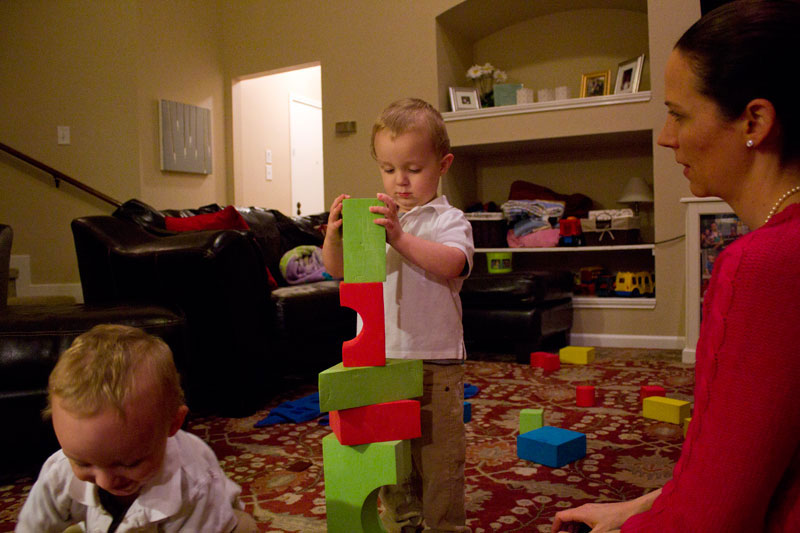
One of many anomalies of the belief that certain vaccines cause autism is whether the blame should be placed with the doctors who administer them, the public health authorities that approve their use, or Big Pharma. In his book Defeating Autism: A Damaging Delusion, British primary care physician Dr. Michael Fitzpatrick (father of an autistic child) writes that while in Britain the MMR vaccine was singled out for causing autism, in the United States attention focused on vaccines containing the mercury-based preservative thimerosal. MMR, Fitzpatrick points out, has never included thimerosal because it’s a live vaccine. In other words, if it was thimerosal causing autism, what about MMR, and vice versa?
Fitzpatrick writes that in 2004, a comprehensive review by the Institute of Medicine, the health arm of the National Academy of Sciences, rejected claims of a vaccine-autism link. In addition to the studies showing MMR had no impact on autism, the American Academy of Pediatrics also says there is no scientific proof to support a link between thimerosal and autism disorders, and in any event, almost all vaccines in the recommended immunization schedules administered to children in the United States stopped containing mercury in 2002—yet autism rates continued to climb. But none of that stopped the campaigners. Fitzpatrick contends the number of children with autism undergoing chelation therapy increased from a handful in 2000 to an estimated 10,000 five years later.
It’s worth pointing out that children have died from chelation therapy, and chelation in rats that didn’t have lead exposure produced lasting cognitive damage, according to a 2006 study.
As the anti-mercury campaign gathered momentum in the U.S., Fitzpatrick writes, there were signs of a growing interest in what he refers to as the “unorthodox biomedical movement” in Britain. “Those supporting the magazine Autism File, published by parents in West London, moved away from a narrow focus on vaccines to pursue a wider interest in biomedical interventions.”
The founder of Autism File is a woman named Polly Tommey, who is also the mother of an autistic child. In 2010, according to an Observer review of records kept by the Texas Secretary of State, Andrew Wakefield registered a company called The Autism File Global in Texas, listing Tommey as a fellow manager. In June 2011, an amendment was filed changing the company’s name to the Autism Media Channel. Today, its website contains general autism tips, diet and nutritional information, and various embedded videos, many of which feature Tommey. Wakefield remains a director of the company.
Fitzpatrick writes: “As more and more parents of children with autism have been drawn into anti-vaccine campaigns and the pursuit of unorthodox biomedical therapies, I have become increasingly concerned at the damaging consequences of the quest to ‘defeat autism.’ The movement that has advanced under this banner on both sides of the Atlantic seeks to redefine autism as an epidemic disease caused by vaccines or some other, as yet unidentified, environmental factor. Despite the lack of scientific support for this theory it has acquired the character of a dogmatic conviction for many who uphold it, in the face of all contradictory evidence. Parents who share this faith are subjecting their children to treatments for which there is no coherent scientific rationale.”
Dr. James Laidler was one of those duped parents. A doctor since 1985, he did his residency in anesthesiology in Chicago and began treating children with autism in 2000. Until recently, Laidler was talking up chelation therapy at autism conferences. He even attended one with Andrew Wakefield. A few years later, on the blog Autism Watch (autism-watch.org), Laidler wrote: “Everyone has something in their past that they are embarrassed about—and that is mine.”
A year after his son’s autism diagnosis, Laidler was desperate for anything that might help. He started giving his son supplements—vitamins and minerals often pushed as an alternative autism treatment—then moved on to a gluten- and casein-free diet (by eliminating wheat, barley, and dairy products, which a 2010 University of Rochester study found had absolutely no impact on the behavior, sleep or bowel patterns of autistic children), and eventually chelation therapy.
“The next year,” Laidler wrote on Autism Watch, “I accompanied my wife to [an] autism conference and was dazzled and amazed. There were more treatments for autism than I could ever hope to try on my son, and every one of them had passionate promoters claiming that it had cured at least one autistic child—usually their own. There were blood tests, urine tests, hair tests, saliva tests, brain wave tests and eye tests, all claiming to be able to find the specific cause for a child’s autism.”
In a phone conversation in late November, Laidler told me it was sometime around 2003 that he experienced what he terms his “awakening.” “I was on the speaking circuit, talking to parents about these miracle cures, meeting Andy Wakefield and some of these other people, and realizing they were slimy charlatans. These people were almost evangelical in their outlook, saying, ‘we’re going to save your child.’ I knew a lot of physicians, and I’d never heard one of them say they were going to cure someone.”
Almost by accident, Laidler says he and Ann, discovered the diet they’d put their son on didn’t work. “He was gluten-free and we thought it was a miraculous cure for our son because he’d made pretty dramatic strides from the age of 3 to 4. We were starting to see real progress. But on a trip to Disneyland, he grabbed a waffle off the table and ate it before we could stop him. Doctors had told us that one drop [of gluten] would cause a dramatic relapse—we’d been told anecdotal stories that a speck of wheat bread would cause an autistic child to have weeks of bad behavior. And nothing happened.”
The Laidlers had also tried chelating their son, and as physicians they had helped other families who wanted to try it. “Nobody ever told me it did any good. So to regain my sense of mental balance I started asking a lot of pointed questions: Have you tried chelation? What was the result? Ninety percent of people I asked said they saw no improvement.”
As for vaccinations, Laidler says he knew measles was a very rare disease (you have a one in a million chance of getting measles today in America), but he reminded himself that we need 95 percent of the population vaccinated to keep it at bay, what’s known as herd immunity. “One in a thousand children who gets measles will die,” Laidler says. “Two in a thousand will have permanent injury such as brain damage. It’s a very serious illness, but thankfully it’s currently a very rare illness because the vast majority of the population is vaccinated.”
Laidler says we actually do know a lot more about the causes of autism today than we did a decade ago. And it’s mostly genetic. “Unfortunately, that’s not a very satisfying answer to many parents. It’s something they can’t change because their children were born with it. And more and more we’re finding that treatments aren’t very satisfactory. Like Down Syndrome, you can deal with some of the issues surrounding it, but you’re never going to fix the underlying problem.”
He describes autism as a “fertile field for quacks and frauds,” largely because you can’t tell what a child is going to look like developmentally at age 18 based on their development at 2 or 3. Two of Laidler’s children were diagnosed with autism spectrum disorders and at age 2 they looked about the same, he says. “They were non-verbal, all the usual stuff. Well, today one of them is still non-verbal. In fact he’s very disabled. But the other is indistinguishable from his peers.
“Autism is a syndrome of developmental delay, so what these quacks will do is start treatment and after a period of time say, ‘Look, they’re now making eye contact.’ But the child may have done that anyway.”
In reality, Laidler says, your primary care doctor does a good job of describing available treatments for autism—but it’s not a very happy story. “And parents, like myself, don’t like the truth. Most people are much happier with a pleasant lie than an unpleasant truth. These quacks are selling false hope, and this should be listed up there with heroin as an addictive substance. I’ve had a lot of people chastise me for taking people’s hope away.”
So what does mainstream medicine know about autism spectrum disorders? According to the American Academy of Pediatrics, because most children with autism spectrum disorders will master sitting, crawling, and walking on time, their parents or doctor may not initially notice telltale signs such as delays in communication or social skills. We know that autism disorders affect boys over girls at a rate of about four to one. We know that around a quarter of children diagnosed on the autism spectrum seem to have normal or near-normal development until about 18 months of age, after which they will gradually or suddenly stop using words they once had and become more withdrawn—much like Jude Dimick. We know that starting an intervention program as soon as possible can help a lot.
I contacted a number of parents of autistic children for this story. Jennifer Miller, who has a teenage daughter on the spectrum, told me that while she accepts there’s a “genetic component” to autism, she’s convinced environmental toxins can act as a trigger. It was something I would hear often: parents convinced there were other causes of their child’s condition. “In Houston, where we lived, there were lots of petrochemicals, plastic and PCBs everywhere,” Miller told me. “It’s a very polluted world. But I did everything right: breast-fed till 10 months, ate a healthy diet. No depression, alcoholism. [My daughter] met all her developmental milestones. Then we came to a point where she approached 24 months and she had gastrointestinal problems, wouldn’t sleep, started losing the skills she’d learned, and got to be almost nonverbal.”
I sat down with another mother in the cafe of a bookshop north of Austin. I’ll call her Kate. She asked that I use a fake name to protect her son’s identity. She told me that her son was diagnosed with autism at age 2. By the time her son turned 3, Kate had discovered studies by Andrew Wakefield on the “benefits of gluten-free and casein-free diets.”
Wakefield, she said, emailed her some tips. The new diet apparently helped her son and she felt his speech was improving. Then another parent referred her to Dr. Kendal Stewart, also based in Austin. Stewart’s specialization, she said, was neuroimmune disorders. “He explained that the regressive autism was secondary to a larger disorder affecting the immune system and the brain. Finally, we were getting answers,” she said.
Kate told me Stewart diagnosed her son as having a “significant viral burden causing inflammation” and began anti-viral therapy. Stewart apparently also discovered her son had “multiple allergies, heavy metal toxicity and impaired folate metabolism” (not enough folic acid).
She told me Stewart used “targeted supplementation and interventions” to “heal” her son’s “neuro-immune dysfunction,” adding that she is also in the process of writing a book with Stewart to share their story and help other families.
Kate said Stewart told her that her son wasn’t clearing harmful toxins out of his body. He was showing “really high mercury levels,” she told me, but these could apparently be cleared using supplements that have “natural chelators in them like garlic, parsley, things like that.”
Stewart also recommended Epsom bath salts three times a week, Kate said, and prescribed “a high dose of folic acid.”
Kate says her son’s “multiple allergies, heavy metal burden, viruses, and gastrointestinal issues, all that went away within the first year of treatment with Dr. Stewart,” and in 2008 he started using words again.
She insisted people come from all over the world to see Stewart and that he is a “world-renowned doctor for healing autism … he has thousands of case studies, unfortunately he needs to find time to publish them. Because he just is a very, very busy man.”
Dr. Kendal Stewart, I discovered, runs a company called Neurobiologix that, according to promotional materials, sells “pharmaceutical grade supplements” like—surprise—folic acid ($37.90 for 90 capsules), “G.I. Recovery” pills ($35.50), and a “nutrition essentials kit for kids” for $90, which includes chewable vitamins, a neuro-immune stabilizing topical cream “created by renowned physician Kendal Stewart,” and a tub of probiotic powder.
Stewart, an ear, nose and throat specialist by trade, spoke to me by phone from his office in Austin. He told me he has seen more than 8,000 children diagnosed with autism and that he treats “the underlying problems, not the autism itself,” and that mainstream medicine isn’t interested in fixing the underlying problem, which he’s convinced is a neuro-immune disorder. “Drug companies run mainstream medicine,” he said.
Stewart also said this: “Just by having a genetic marker, you can’t get autism. You need a triggering event: a head injury, meningitis, toxic exposures. But the most common [trigger] by far and away is vaccinations.”
Stewart was starting to sound a lot like Andrew Wakefield. And it turned out the two doctors know one another. “I think eventually, once everybody clears the playing field, Andy will be vindicated,” Stewart told me, but he conceded that Wakefield’s reputation hasn’t helped him.
I asked Stewart why, if it was so effective, he hadn’t published his research in peer-reviewed journals after performing proper evidence-based studies.
“Evidence-based medicine is best because there’s an objective foundation that can’t be faked,” he said. “But if it’s a controversial topic it will not appear in a peer-reviewed journal.”
Stewart told me that selling his patients supplements through his company was more cost-effective. “The reason is, when we need 20 or 30 supplements, if we blend them into formulas we make it a lot simpler to treat the child.” None of these supplements have been FDA-approved for treating autism.
Stewart said he is simply treating the conditions the children are suffering from, so that they are prepared for the Applied Behavior Analysis therapy. The most important factor in treating autism, he said, is the parents. “They’re the quarterbacks of their child’s care. No professional is going to step out there to take responsibility.” That last statement proved quite true.
I met for coffee with Dr. Jody Jensen, director of research of the Autism Project at the University of Texas. I hoped she could shed some light on what treatments have actually been proven to work.
The Autism Project was set up by Jensen and her colleague Pamela Buchanan to provide a center for best practices related to children with autism disorders. The Project doesn’t prescribe medication, but it does disseminate the best-available scientific knowledge to help steer people through the minefield of information. The project also runs its own therapy sessions.
Jensen put it like this: If you take a parent who says they had a great experience with a particular treatment, and that as a result their child is dramatically different, whose credibility is stronger, the parent or the scientist? “In the world of emotion, it’s going to be the parent,” Jensen said. “But that’s not the world of skepticism, it’s the world of hope. And as scientists, we have to remain skeptical.”
Jensen said if treatments like chelation or vitamin B supplements or gluten-free diets cured or even dramatically reduced the symptoms of autism, there would be a lot of excellently executed, randomized control trials carried out and published in reputable peer-reviewed journals. “But there are not,” she said, “and it’s because we can’t find that persistent evidence. Plus the difficulty with doing this kind of research is that families are often giving their autistic child three, five, 10 different interventions at the same time.”
She also pointed to what she called the “perception of change”—that parents feel less stressed when they believe their child is enrolled in a useful or therapeutic program, regardless of the actual outcomes of that program. “There is a 30 percent placebo rate in medication, and the same thing happens when your child is involved in some sort of program.”
So what should parents be doing? What actually works? Jensen said a physician who makes the diagnosis of autism spectrum disorder will likely write a prescription for physical therapy and speech therapy. “And if there is one thing that we know very clearly, it’s that children with autism respond to intensive behavioral intervention.”
Applied Behavior Analysis is considered the gold standard of treatment, Jensen said. And the recommended amount of treatment time is typically 40 hours a week. She conceded that a board-certified specialist can charge anywhere between $50 and $300 an hour, so for many parents this is just not viable.
Parents can and should get involved in helping their child through therapy and not just leave it up to the therapist.
“We are not doing anything special,” Jensen said. “What we are doing is providing the resources to allow these kids to be safe and to explore and experience things like every other child. That’s what’s often lacking. It’s about trying to restore some sense for them of what a typical childhood looks like.”
That is what parents of kids with autism disorders want more than anything for their children: a normal childhood. Those children just might have a fighting chance to get it—if they don’t have to undergo therapies and treatment unsupported by any scientific evidence, therapies and treatments that are time-consuming, costly, and benefits only to the people administering them.
